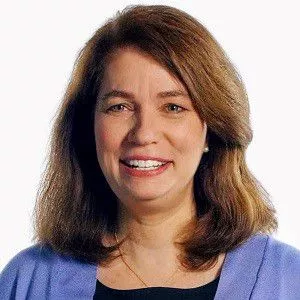“They are disrupters, rabble-rousers, and activists.” That’s how one participant described more than 45 human resources leaders who gathered in New York City on September 30th for BCG’s fourth annual CHRO Summit. The theme this year: strategies for a new era of human resources .
Kicking off the meeting, former acting Undersecretary of Defense for Personnel and Readiness Brad Carson challenged the group to step back and think about the fundamental ways in which they can help build more effective organizations. Carson outlined research about the dynamics that govern cities, which found that living in a city boosted an individual’s productivity by at least 15%. “All of the serendipitous encounters, the informal networks, the crazy ballet of human exchange—all of these were better in cities than in nonurban areas,” Carson told the group. “And they made us more effective at whatever we chose to do.” Yet the research also found that the opposite was true for employees in large organizations: doubling a company’s size led to a 15% decrease in productivity. The question for corporate leaders, including forward-thinkers in HR, is clear: how do you make your company more like a city and less like a traditional organization?
The group of chief human resources officers (CHROs)—representing companies with a combined total of 1.6 million employees—dissected the forces that are driving change in HR’s role and shared insights on the new approaches and ways of thinking that they are implementing on the frontlines. The following are some of the key takeaways from their conversations.
The New Approach to Work
Participants discussed how they are witnessing firsthand a shift to the so-called gig economy. Estimates show that, by 2020, freelancers will constitute half of the full-time work force in the US. Mara Swan, the executive vice president for global strategy and talent at ManpowerGroup and a featured speaker at the summit, explained that while contingent workers in the past may have largely possessed commodity skills, today’s independent contractors include people who are highly skilled, such as engineers and salespeople.
Participants discussed two ways in which this will impact HR strategies . First, it will compel companies to manage the pipeline of external talent more proactively and to find ways to effectively integrate freelancers with employees. Second, it means that in many cases even employees are thinking of themselves as free agents. As a result, they will favor companies that give them the opportunity to develop skills that will make them more marketable in the future. One participant described how her company created a platform on which teams posted technical problems that they were trying to solve. Employees could sign up to work on a solution in their free time. This not only allowed the company to crowdsource projects, but it also provided a way for employees to cultivate or showcase critical skills.
Millennials, in particular, are embracing the gig economy, and summit participants discussed how HR will need to adapt to meet the demands of this large employee bloc. Surveys show, for example, that only 20% of millennials aspire to be managers—but the majority of them say that they aim to be leaders. The challenge for HR is to figure out how to develop career paths that meet both the goals of millennials and the workforce needs of the company. One participant explained how focusing on inclusion is critical. As part of an effort to make employees feel connected and included, her company involved them in an open dialogue to revise the corporate values statement.
Fixing Talent Development
The spirited small-group discussions of leadership and talent development crystallized a number of difficult challenges. Among the most significant: the need for organizations to expand the pool of employees with certain skills while technological advances, such as those in robotics and cognitive technologies, continue at breakneck speed. Compounding the challenge is the fact that the list of critical skills is constantly evolving. “The life cycle of skills is declining dramatically,” says Swan. “So we need agility and speed.”
The small groups also zeroed in on the need to strengthen learning in nonclassroom settings, such as rotations in different functions and locations. Certainly, such moves have always been a critical component of talent development. But in today’s environment, when many companies have delayered and increased spans of control, these rotations have become less about climbing the corporate ladder and more about acquiring new skills and expertise. Yet employees are often reluctant to accept rotations because of concerns about the impact of a move on their families—an issue that worried some HR leaders, given the tremendous value that such rotations provide. One group noted that storytelling—sharing real-life anecdotes that illustrate both the professional and the personal benefits of moves—can help address that resistance.
For other participants, getting employees to move is less challenging than dealing with the rapid pace of position changes. Such changes can make it difficult to see what sort of impact any given manager might have had during his or her stint, and they also make it more difficult for managers to build solid teams that will sustain the momentum once the managers leave. One proposed solution to this dilemma was to extend the time that managers must stay in their positions—even if that generates resistance in ambitious executives.
The Data Analytics Challenge
There has been an explosion in the breadth and depth of data available to HR leaders from sources such as LinkedIn and Glassdoor. John Berisford, the president of S&P Global Ratings, described the ability to collect and analyze data as a “profound change” for HR. To tap this opportunity, HR leaders have to address two challenges.
First, they must satisfy the demand for employees with data analytics skills. The group argued that this challenge is broader than simply hiring some whip-smart analytics experts. It also involves ensuring that people across the business, including salespeople and leaders who are setting company strategy, have the expertise to harness this new wave of information. HR departments need to take the lead in identifying the analytical skills that are required across the company. If they fail to do this, companies risk developing small pockets of digital expertise that don’t have a real impact on the business.
Second, HR leaders must harness the power of data analytics to improve the HR function itself. Gabrielle Toledano, the executive vice president and chief talent officer of Electronic Arts, observed that this technology gives companies the ability to identify critical patterns, such as analyzing who leaves the company over time, to help forecast where future attrition may be highest. “CEOs love this [sort of insight],” Toledano said. Such information becomes even more critical in the new gig economy because people move in and out of companies more easily. Given that reality, BCG’s Matt Krentz, the chair of the firm’s global people team, said that companies need to think about their pool of alumni as a potential source of future recruits and leaders.
A Strategic Role for HR in an Era of Disruption
Over and over, participants discussed how the changes sweeping many industries—and the transformation initiatives that grow out of these disruptive forces—create a major challenge for HR leaders. Brad Carson described the increasing pace of change globally—captured by the acronym VUCA (volatility, uncertainty, complexity and ambiguity)—and what it means for the organization and management of companies. He noted that rather than viewing themselves as quarterbacks or conductors, many of the military’s most successful leaders have begun “to think of themselves as gardeners, cultivators of a complex ecosystem.”
HR needs to take on a larger, more strategic role in such an environment. Almost all of a company’s capital—financial and human—is controlled by three top executives: the CEO, the CFO and the CHRO. Berisford, who transitioned from the head of HR at S&P Global to his current operational position, discussed the interplay among those roles—what he called “the corporate trinity.” He also highlighted HR’s power to create value, whether by helping to build a team with the right skills or by adjusting compensation to drive desired results. The importance of the HR role was underscored by Paul Bianchi, a former senior vice president of human resources at genomics pioneer Illumina. Bianchi played a key role in managing the succession plan at Illumina as CEO and industry icon Jay Flatley approached retirement. The candid and freewheeling Q&A that followed Berisford’s and Bianchi’s presentations reinforced the view that now, more than ever, the corporate strategy for large companies hinges on the people strategy.
The scope and pace of change around the globe is stunning—and it demands a fundamental shift by HR leaders. Undeniably, the challenge is significant. But the HR leaders that recently gathered in New York are clearly energized by it and are experimenting with novel and creative solutions.






